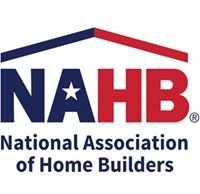WASHINGTON, D.C. – August 17, 2011 – (RealEstateRama) — The Environmental Protection Agency’s decision today to reconsider the imposition of a nationwide cap on how much sediment can be part of the stormwater draining from a construction site is a nod to the importance of sound science – and a big victory for home buyers, according to the National Association of Home Builders (NAHB).
The agency’s announcement comes a year after EPA’s first proposal to develop a numeric limit for the turbidity, or cloudiness, of stormwater discharge was rejected by the 7th Circuit Court of Appeals, which had essentially told EPA to come up with an Effluent Limitation Guidelines (ELGs) number that was legally defensible.
In addition, NAHB estimated that attempting to comply with the regulations would carry a $10 billion annual price tag – stunting new home production and forcing costs up for home buyers.
Today, the agency announced that it still couldn’t justify any specific limit and will start over again. EPA will talk to home builders, environmental scientists and other members of the public to gather better data – a solution that NAHB has advocated for more than three years.
“EPA set a numeric limit for water cloudiness that was based on flawed analyses,” said NAHB Chairman Bob Nielsen, a builder in Reno, Nev.
Both the Small Business Administration and the federal Office of Management and Budget had warned EPA that the regulation would not hold up, joining NAHB in voicing concerns about the monitoring and sampling requirements.
“In its calculations, EPA relied on questionable data, including figures obtained from the vendors that would have supplied the expensive systems home builders would have been required to use. That’s no way to come up with national policy,” he said.
Because terrain, geography and rainfall vary significantly in most regions of the country, NAHB has long held that a nationally applicable numeric limit is neither defensible nor practicable. “It’s our hope that EPA’s research will take that fact into account,” Nielsen said.
In the meantime, NAHB is redoubling its efforts to collect turbidity data from its members’ construction sites to help ensure that the eventual ruling makes good scientific sense.
“Stormwater management must be straightforward, affordable and workable,” Nielsen said. “That’s the only way we can continue to make progress. NAHB supports responsible development and the goals of the Clean Water Act. The association will continue to work with state and federal regulators to keep our waterways clean,” Nielsen said.







